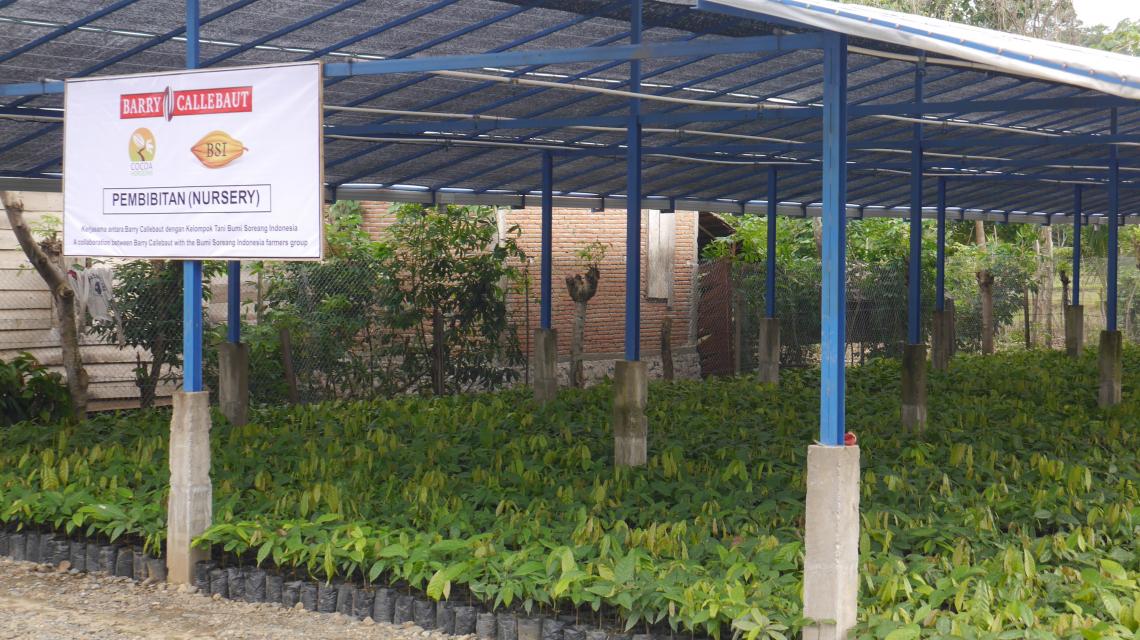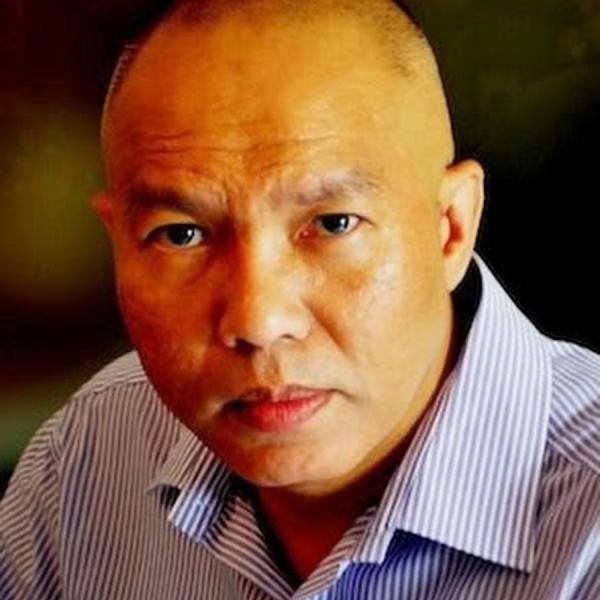Cocoa nurseries program is expanding in Indonesia

Cocoa nurseries program is expanding in Indonesia

Richard Fahey, Vice President for Cocoa in Asia
Barry Callebaut’s Richard Fahey, Vice President for Cocoa in Asia, and Indonesia-based Sustainability Manager Ani Setiyoningrum, answer questions about our innovative seedling program in Indonesia.
Why do cocoa farmers need new trees?
Richard Fahey: Indonesia has been struggling to increase cocoa production because of ageing cocoa trees. Most of them were planted in the 1980s, are vulnerable to diseases and are well past their peak production years. Cocoa trees are strong, and will produce pods for a long time. However, the high-productive years of a cocoa tree are finite, and usually after 25 years, the trees are less productive. Indonesia desperately needs new trees in order to get back to a productivity level of around 1 mt of beans per hectare.
High-quality nurseries therefore are essential to provide the supply of seedlings the farmers need and give them the confidence that the seedlings they purchase will turn into high-yielding, disease resistant trees.
Why are cocoa nurseries important for our farmers in Indonesia?
Richard: Most Indonesian farmers are willing to invest in their farms, and they understand that new trees will be more productive. But they simply have not had access to good planting materials and therefore prefer to stick with their old trees rather than risk planting new trees that may or may not be effective. High-quality nurseries are therefore are essential to provide the supply of seedlings the farmers need and give them the confidence that the seedlings they purchase will turn into high-yielding, disease resistant trees.

Ani Setiyoningrum, Barry Callebaut's Indonesia-based Sustainability Manager
Ani Setiyoningrum: The purpose of cocoa nurseries is to provide a conducive environment in which young cocoa plants can grow a good number of leaves and fully develop its root system to a certain stage that will give cocoa plants a better chance of survival at the cocoa farm. These nurseries will require shade, water and protection from wind, and whenever necessary, protection from stray animals.
There are already cocoa nurseries in Indonesia? Why are we also doing this?
Richard: Plantations in Indonesia typically have 400-600 cocoa trees growing per hectare. Let’s do the math. If we are to estimate that there is 500,000 hectare of cocoa farms in Indonesia, we are basically looking at replacing at least 200 million trees. This nationwide replanting initiative is massive and would take a lot of effort not just from Barry Callebaut but across various organizations.
How are our cocoa nurseries different from others?
Ani: These are community-run nurseries that we help to kick-start by providing them with a start-up investment and best-practice models. These nurseries are also a form of income for these nurseries owners, some of whom are cocoa farmers themselves. Our field experts work closely with these nurseries owners to teach them to produce high quality seedlings with a high survival rate. They are given proper planting material, high-quality seeds, and the right potting mix, and are guided to develop good nursery management skills and standard operating procedures. These nursery owners then work as a professional service provider for other farmers which is becoming an avenue for additional income. The project model we are testing with around 50 nurseries across Sulawesi is suitable for nurseries producing at a large scale. Our intention is that the nurseries we start-up will eventually become totally self-sufficient businesses in their own right.

The nurseries will provide shade, water, protection from wind, and when necessary, protection from stray animals.
Why will these improved seedlings provide a better yield than the existing trees?
Ani: Usually, cacao trees start in a nursery bed where seeds from high yielding trees are planted in a polybag. The seedlings grow so fast that in three months they are ready for top grafting. The grafting will ensure the tree carry the genetics of its mother tree. By selecting the budwood for grafting, new seedlings grow into more robust trees, and are able to reach maturity sooner. Our monitoring program allows us to measure the performance of these plants so we can ensure these nurseries adopt the most efficient processes. These new seedlings start producing pods an average of 18 months after planting and are proven to have better survival rates.
Once planted on the farm, these seedlings are more likely to survive and become healthy trees. We're expecting a 90 percent survival rate for our seedlings.

Richard Fahey (pictured far right),"High quality seedlings are important to instill farmer confidence and encourage replanting in communities"
How did Barry Callebaut determine that investing in professional nurseries would be an efficient way to provide farmers with seedlings?
Ani: The scale of professional nurseries allows us to introduce specific planting materials, better structures, automatic irrigation, and a better monitoring program. This will secure the quality of the seedlings produced and we can introduce new ideas for improvements in a more efficient way. Once planted on the farm, these seedlings are more likely to survive and become healthy trees. We're expecting a 90 percent survival rate for our seedlings.
What else is new about the seedling program?
Richard: In Indonesia, we are piloting a new way of setting-up these nurseries and distributing these seedlings to the farmers. The challenge is how we can escalate the seedling propagation program while also try to reduce the production cost of each seedling. We have learned a lot from our colleagues in Brazil and we are borrowing some of their best practices, including using elevated tables and space efficient planting tubes. While setting up these improved nurseries and distribution networks, we continue to support farmers to establish nurseries in their own communities because it helps to increase the overall supply of new trees.
We have learned a lot from our colleagues in Brazil and we are borrowing some of their best practices, including using elevated tables and space efficient planting tubes.
Are farmers willing to pay extra for these seedlings?
Ani: Yes. The farmers have begun to have access to demonstration plots where they can see for themselves the undeniable differences between these seedlings versus traditional trees. We need to reach a certain number of seedlings per nursery to start seeing significant economies of scale and propagate the benefits of this program.
Editorial note: Additional reporting by Shuen Tam, Corporate Communications Barry Callebaut, Asia Pacific, Singapore.
All pictures are available for downloading on our Flickr page.

